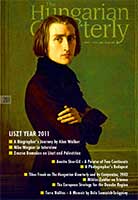The European Strategy for the Danube Region
The European Strategy for the Danube Region
Author(s): Jürgen Dieringer, Johann-Jakob WulfSubject(s): Politics / Political Sciences
Published by: Society of the Hungarian Quarterly
Summary/Abstract: The European Strategy for the Danube region (EUSDR) is among the key policies of Hungary’s six-month rotating EU presidency. Hungary has been active in working out a concise programme and promoting it within the European Union. The latest round of eastern enlargement has added a highly diverse but socially and economically unbalanced political entity to the EU fanning out from Atlantic icebergs to the shores of the Mediterranean and stretching from the Eastern Carpathians to the Black Sea. The EU has started to divide this geographical swathe into macro regions, but only for certain purposes and does not cover the whole territory. Such subdivisions, or macro-regions, cover various countries or regions associated with common features or challenges. They are meant to help devise strategies so as to iron out spatial imbalances and combat threats to the environment, among other aims. The Baltic Sea regional strategy was adopted in 2009; the one for the Danube region is in the process of being adopted. Advocates applaud its efforts to halt regional fragmentation and dispense with plodding, one-size-fits-all schemes. Detractors complain the strategies merely duplicate existing programmes. The Danube Strategy’s three central doctrines—no new legislation, no new institutions, no fresh money—are either liberating or constraining depending on your point of view. What can the EUSDR, scheduled to be passed into law in June 2011 at the tail-end of the Hungarian EU presidency, realistically accomplish?
Journal: The Hungarian Quarterly
- Issue Year: 2011
- Issue No: 201
- Page Range: 37-44
- Page Count: 8
- Language: English

